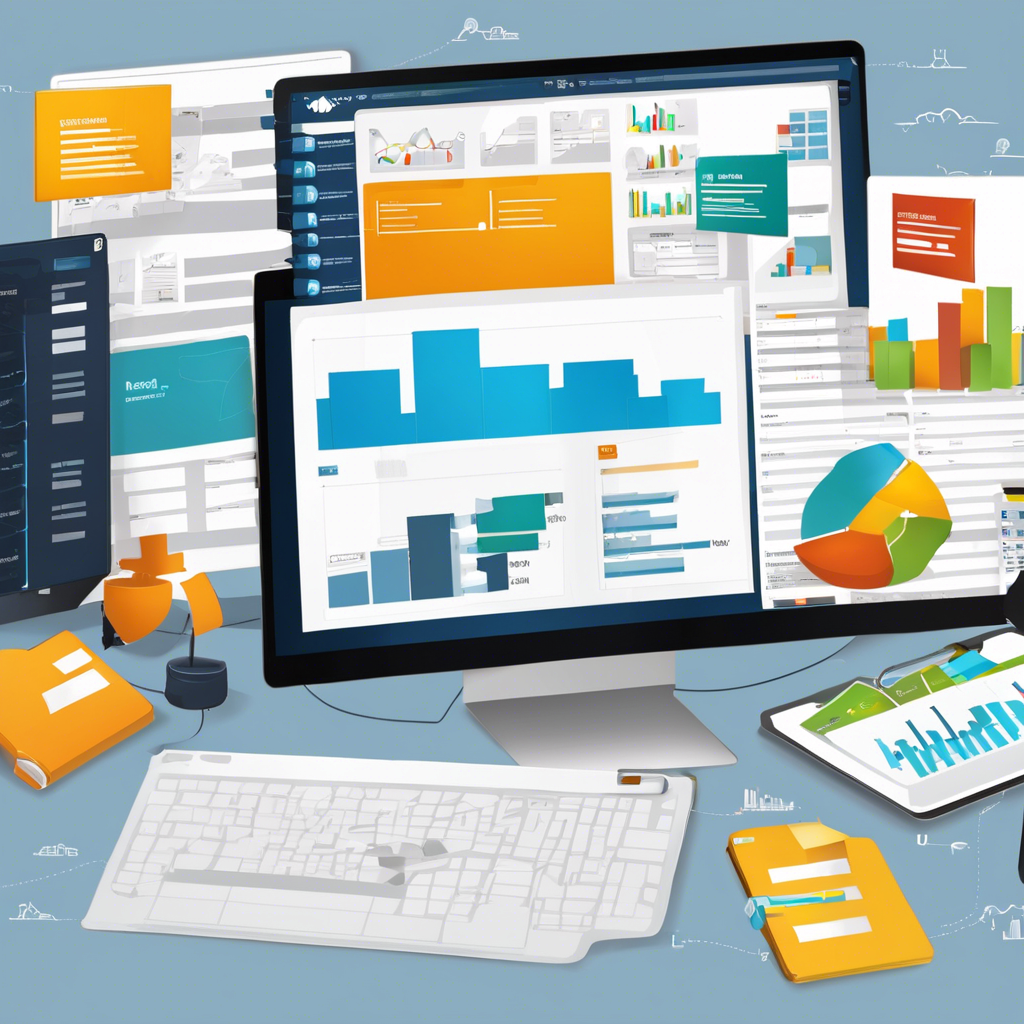Enterprise resource planning software (ERP) has revolutionized the way businesses operate in today’s fast-paced digital world. ERP software is a powerful tool that integrates various functions across an organization into a single system, streamlining processes and improving efficiency. From finance and human resources to supply chain management and customer relationship management, ERP software helps businesses centralize their operations and make data-driven decisions.
One of the key benefits of ERP software is its ability to provide real-time insights into business operations. By consolidating data from different departments and functions, ERP systems enable companies to have a comprehensive view of their performance and make informed decisions. This real-time visibility helps organizations identify trends, spot opportunities, and address challenges promptly, leading to improved productivity and profitability.
ERP software also enhances collaboration and communication within an organization. With all departments using the same system and accessing shared data, employees can work together more effectively and efficiently. This seamless integration promotes cross-functional teamwork, reduces silos, and fosters a culture of collaboration that drives innovation and growth.
Furthermore, ERP software can automate repetitive tasks and streamline processes, saving time and reducing errors. By automating routine activities such as data entry, reporting, and inventory management, ERP systems free up employees to focus on more strategic tasks that add value to the business. This automation not only improves operational efficiency but also minimizes the risk of human error, enhancing the overall accuracy and reliability of data.
Another advantage of ERP software is its scalability and flexibility. As businesses grow and evolve, their needs and requirements change. ERP systems are designed to adapt to these changes, allowing organizations to customize and expand their software to meet new demands. Whether it’s adding new modules, integrating third-party applications, or accommodating increased user volumes, ERP software can scale with the business and support its growth trajectory.
In addition to operational benefits, ERP software can also enhance customer satisfaction and loyalty. By centralizing customer data and interactions, organizations can provide more personalized and responsive service to their customers. ERP systems enable companies to track customer preferences, anticipate needs, and deliver tailored solutions that drive customer engagement and retention.
Security is another critical aspect of ERP software. With sensitive business data stored in the system, security measures are paramount to protect against cyber threats and breaches. ERP vendors invest heavily in security protocols and encryption technologies to safeguard data integrity and confidentiality, ensuring that businesses can trust their ERP systems to keep their information secure.
Moreover, ERP software promotes regulatory compliance by enforcing standardized processes and documentation. With built-in controls and audit trails, ERP systems help businesses adhere to industry regulations and compliance requirements. This reduces the risk of non-compliance penalties and legal issues, safeguarding the organization’s reputation and financial stability.
Despite its numerous benefits, implementing ERP software can be a complex and challenging process for businesses. From selecting the right vendor and software solution to training employees and migrating data, ERP implementation requires careful planning and execution. Companies must allocate sufficient resources and time to ensure a successful transition to ERP software without disrupting daily operations.
Training and change management are crucial components of ERP implementation. Employees need to be trained on how to use the new system effectively and adapt to new processes and workflows. Change management strategies can help mitigate resistance to change, foster user adoption, and ensure a smooth transition to ERP software across the organization.
Cost is another consideration when investing in ERP software. While the initial upfront costs of purchasing and implementing ERP systems can be significant, the long-term benefits and return on investment (ROI) often outweigh the expenses. Businesses need to weigh the costs against the benefits and potential savings that ERP software can deliver in terms of improved efficiency, productivity, and competitiveness.
Integration with existing systems and legacy infrastructure is another challenge that businesses may face when implementing ERP software. Compatibility issues, data migration complexities, and system interoperability can pose obstacles to seamless integration. Companies need to assess their current IT landscape and develop a comprehensive integration strategy to ensure a smooth transition to ERP software.
Choosing the right ERP vendor is a critical decision for businesses embarking on an ERP implementation journey. Factors such as vendor reputation, industry experience, product functionality, support services, and pricing should be carefully evaluated before selecting a vendor. Businesses should conduct thorough research, solicit vendor proposals, and engage in consultations to find the best fit for their specific needs and requirements.
Cloud-based ERP solutions have gained popularity in recent years due to their scalability, accessibility, and cost-effectiveness. Cloud ERP systems offer businesses the flexibility to access their data and applications remotely, enabling real-time collaboration and connectivity across geographically dispersed teams. The cloud also provides enhanced security, data backup, and disaster recovery capabilities, making it an attractive option for businesses looking to modernize their IT infrastructure.
Mobile ERP applications are another trend that is reshaping the ERP landscape. With the proliferation of smartphones and tablets, mobile ERP solutions allow employees to access critical business information on the go, anytime and anywhere. Mobile ERP apps empower users to make informed decisions, respond to customer inquiries, and manage operations from their mobile devices, enhancing productivity and agility.
Data analytics and business intelligence are integral components of ERP software that enable organizations to extract meaningful insights from their data. By leveraging analytics tools and dashboards within ERP systems, businesses can analyze trends, forecast future performance, and make data-driven decisions that drive growth and innovation. Data visualization and reporting capabilities in ERP software help businesses communicate insights effectively and drive strategic decision-making.
Artificial intelligence (AI) and machine learning are emerging technologies that are increasingly being integrated into ERP software to enhance automation, predictive analytics, and decision-making capabilities. AI-powered features such as chatbots, predictive maintenance, and intelligent forecasting enable ERP systems to learn from data patterns, anticipate outcomes, and optimize processes in real time. These AI-driven functionalities empower businesses to operate more efficiently and competitively in the digital age.
In conclusion, Enterprise resource planning software is a powerful tool that can transform how businesses operate, collaborate, and compete in today’s dynamic business environment. By centralizing processes, improving visibility, enhancing efficiency, and fostering innovation, ERP software enables organizations to streamline operations, make informed decisions, and drive growth. While implementing ERP software poses challenges, the benefits of scalability, flexibility, security, and compliance make it a worthwhile investment for businesses looking to stay ahead in the digital era. With advancements in cloud computing, mobile technology, data analytics, and AI, ERP software continues to evolve and adapt to meet the changing needs of modern businesses, making it an indispensable asset for sustainable growth and success.

